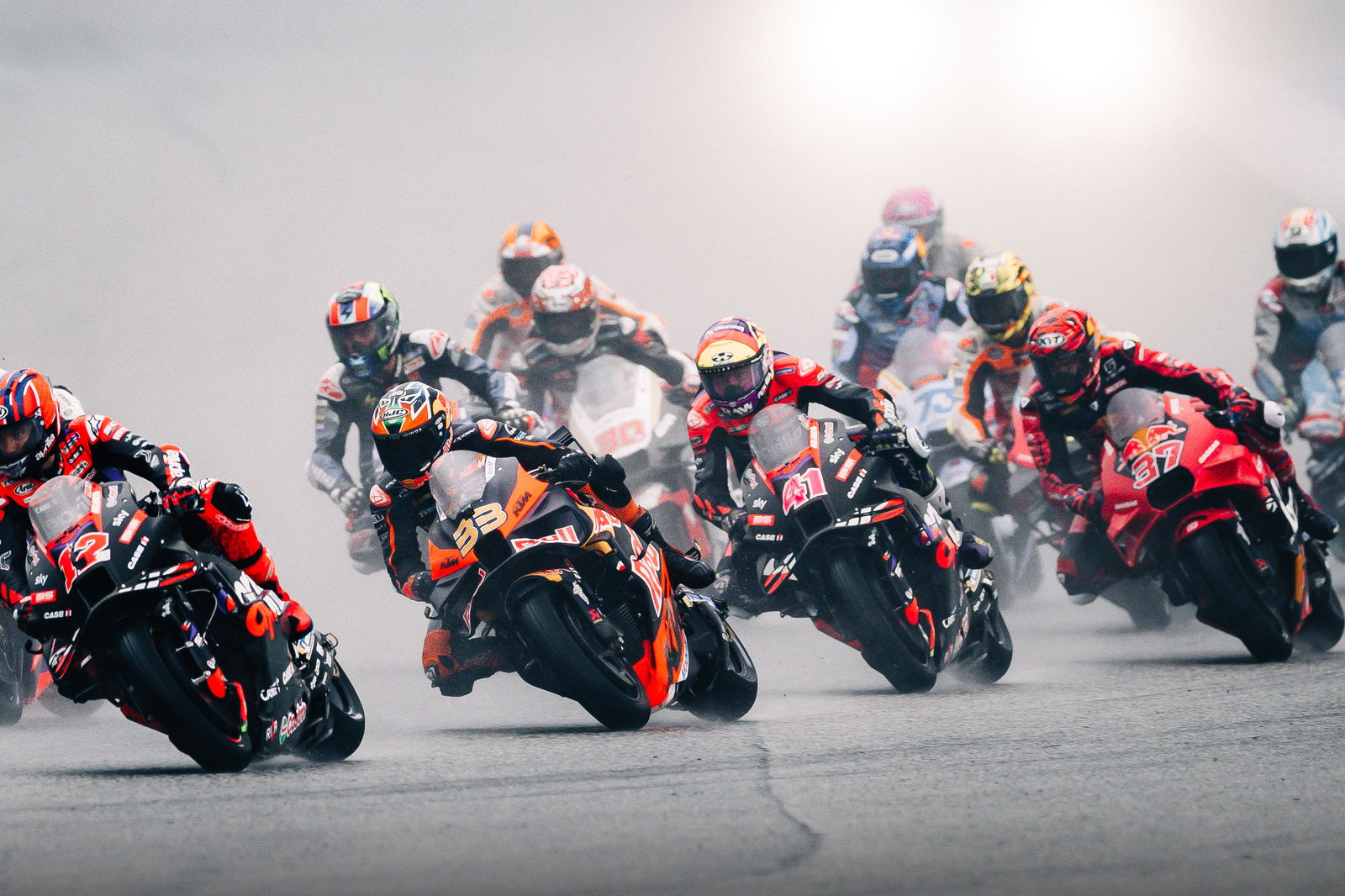

Motorcycle racing’s premier class is set to fall under the ownership of Liberty Media in 2025 in a move worth billions.
Antitrust concerns continue to linger over the transaction that will see Liberty Media take majority ownership of Dorna Sports.
The $6.9 billion deal will see Liberty Media take an 86 percent ownership stake, and if cleared will pave the way for a revitalised global series.
Speaking at a recent Goldman Sachs Communacopia & Technology Conference, Maffei spoke about the Formula 1 success story and how that could be applied to MotoGP.
Formula 1 has enjoyed a massive uptick in interest globally with particular emphasis on the United States.
When Liberty Media bought Formula 1 in 2016 for $8 billion, there was just one race in the United States at Circuit of the Americas.
Now, that race is complemented by grands prix on the streets of Las Vegas and Miami around Hard Rock Stadium.
Maffei conceded MotoGP is heavily influenced by Spain and Italy. As it stands, there are four races in Spain and all but six of the 22 full-time riders are Spanish or Italian.
“I think MotoGP is an unbelievably exciting product,” said Maffei.
“I don’t know how many of you have seen the racing — to see people driving motorcycles, 220 miles an hour six inches from each other, it’s wild. And the overtaking there is incredibly impressive and it’s an exciting product.
“Unfortunately, it’s too little known here in the United States and around the world. There’s interest in Asia and other places, but the real heart of it has been Spain and Italy, to some degree, France.”
Maffei said there is scope to expand the foothold of MotoGP to the United States.
At its peak, in the modern era, MotoGP held three grands prix in the United States across Circuit of the Americas, Laguna Seca, and Indianapolis Motor Speedway at a time when the late Nicky Hayden was among its most popular riders.
Maffei said storytelling would play a pivotal part in the growth of MotoGP in a similar vein to Formula 1 and its Netflix-produced Drive to Survive docuseries.
“Our opportunity we saw was sort of pattern recognition,” Maffei explained.
“We saw what we were able to do with Formula 1 by telling the stories, making them humanised, making the story larger than just about the car, the technology, but also about what the drivers were doing, what was going on behind the scenes, telling those stories, making sure the world understood the breadth of what was going on.
“But also we did a lot to improve things like improving the TV experience, improving what you could see on the screen, making our fans understand the story better. All of those are things that can be helped here.
“And I think, frankly, growing in the US at one race in Austin, for which they receive relatively modest revenues from TV and the like. I think there’s an opportunity to improve that.
“The opportunity perhaps for a second race in the US. All of those, I think, are interesting in ways that look familiar to us from Formula 1, and hope we can replicate here attractively.”




















Discussion about this post